After appreciating importance of cave art which has changed for ever the destiny of mankind and planet as well, now we start a long journey that will lead us to discover “wonders of Art” starting from the first civilization recognized in history of human race,that is Sumerian civilization!
Who were the Sumerians? Where did come from this ancient Mesopotamian civilization? These are questions to which not even expert archaeologists could give us an answer clear and certain! I don’t want to run a search about origins of this mysterious civilization, but rather i would like to analyze its wonderful forms of art! Let’s start to say that Sumerian Art is quite various and elaborate and winds in different periods that it can be divided as follow:
- Protohistoric Period (3500 B.C-2900 B.C.)
- Early Dynastic Period(2900 B.C.-2350 B.C.)
- Accadic Period(2350 B.C.-2200 B.C.)
- II Dynasty of Lagash Period(2150-2120 B.C.)
- Neo-Sumerian Period(2120-2004 B.C.)
In the Protohistoric Period that started about 3500 B.C. in Mesopotamian, first urban centers developed, giving way to the so-called “urban revolution”. In this period Art is influenced by agriculture had transformed society of the time with its innovations. The main themes in the artistic field indeed were linked to“cycle of nature” and goddess of fertility.In Architecture stands out temple complex of Uruk(today Warka) dedicated to goddess Inanna and to the god Anu,meanwhile in statues,despite low finds discovered,you can notice the predilection for statues which evoked some sort of archaic spirituality that aimed to highlight a relationship between man and divinity. You can notice it better by looking the photo of famous“Lady of Warka” that with her big and expressionless eyes evokes trascendent spirituality.
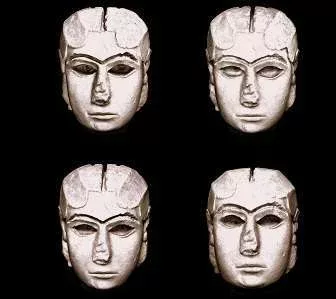
In the relief you can notice the dominant figure of the leader of the community that is often represents fighting with powerful animals like lions and bulls,which symbolizing community upon whom leader exercises his power that is reflected even in natural world and that acts as a balance with the divine sphere as well. This figure played an important point of reference institutional both political and religious. Even in relief there is no lack of representations about agricolture and pastoralism. In the glyptic,that is art to carve gems and hard stones,there is a numerous production of cylinder seals which were used for the economic management and that controlled all income and expense. We can’t not mention the birth of cuneiform writing, the greatest and important invention of Sumer and whole humanity. These clay tablets cointain the most ancient commercial documents of all the time and establish the birth of History” after “Prehistory”. Below you can see an example of clay tablet with cuneiform writing:
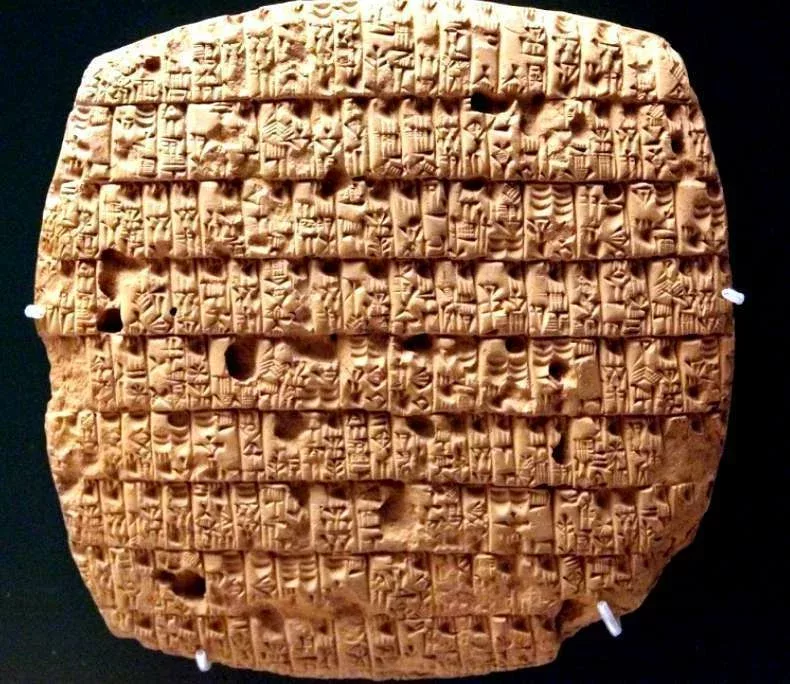
EARLY DYNASTIC PERIOD
In the Early Dynastic Period there was a remarkable demographic increase that led to the birth of the City-State and the consequents wars between them:the famous “Standard of Ur” preseved in the British Museum of London,in fact is an outstanding evidence about these wars. For the first time in history there is the right to rule due to divine parentage that is given by the gods to the monarch.
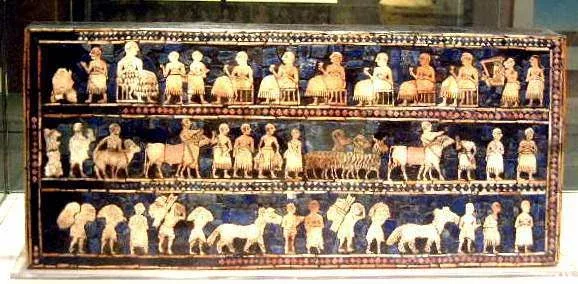
Architecture is influenced by progressive affirmation of theocratic features in the sumerian society that leads to development of temples more and more at the center of its comunity life,so much that they are enriched by administrative offices becoming even place of trade and exchange. All that leads to the birth of new compositional schemes like Square Temple ( Tell Asmar and Tell Agrab) and Oval Temple(Khafajah),whereas we can notice that strangely palaces of the rulers do not follow symmetrical and pre-established patterns. In this period statues tends to get rounder losing the previous angularity,coming ever closer to the geometric shape of cylinder. We can also notice statues more and more distant from realism and increasingly stylized and schematic,the ultimate aim of which was acts as an intermediary between human sphere and divine one, therefore you could communicate with divinity through statue. Precisely for this reason subjects depicted the most were so-called “worshippers” which were simply faithful who worshipped the deity. In the relief favorite theme was feast followed by religious ceremony which were represented especially on votive plaques of modest size average about 20-30 cm. Towards the end of the Early Dynastic Period is strongly affirmed the theme about celabration of victories of monarch over the enemy.
ACCADIC PERIOD
Unfortunately there are not many traces about architecture of Accadic Period beside Palace of Naram-Sim,where is highlights a style with shapes less geometric and more rounded with elegant figures and greater focus to the space and nature. The statues of the deities in this period are represented more naturally and innovation while statuettes of worshippers faded away almost completely in order to give space to divinity of king that became indeed a “God on Earth”. The bronze head known as“Head of Sargon” is the most important sculptural remain of this period while as concern relief,surely “the stone of Namar-Sin” stands out above all others remains due to its important.
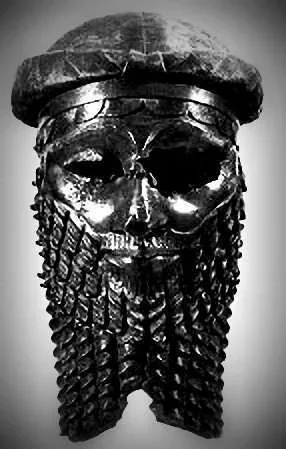

II DYNASTY OF LAGASH PERIOD
This period is characterized for the collapse of Akkar Dynasty which is being displaced briefly by Gudea,monarch of Lagash city. Even in this period statues are represented in a very realistic way,mostly the monarch Gudea which is portrayed as a good and wise king leading the people with onesty and wisdom. He is often carved on diorite statue,dressed with a toga that leaves uncovered right shoulder. Very often he is represented bald or with sheepskin headdress.
NEO-SUMERIAN PERIOD
In this last period are built big terraced buildings called “Ziggurat” of which the example most majestic is “Ziggurat of Ur” on the top of which there stood a temple dedicated to Nanna goddess. This Ziggurat was composed of three balconies that could be reach thanks to the presence of large stairways both central and lateral. In the photo below you can admire Ziggurat of Ur:
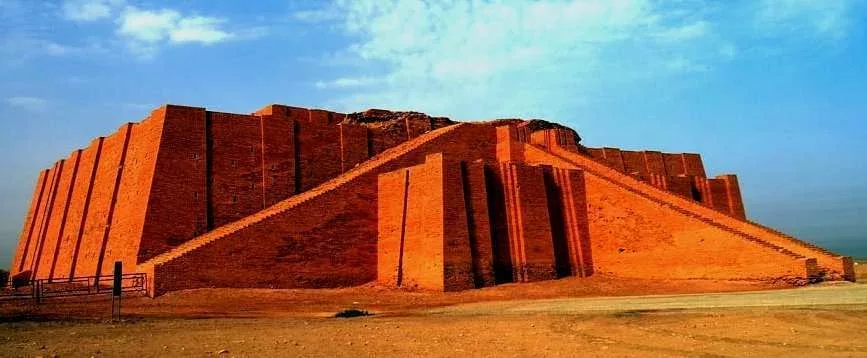
The dicoveries of statues of Neo-Sumerian Period are extremely poor,wheeras as regards relief ,the technique evolves in a more realistic and plastic way,moving away from rigid archaic-patterns of previous works. The stone with its reliefs keeps its deepest meaning,that is a mean of communication between monarch and divinity. Speaking of divinity who were the famous Annunaki? They really were” Those who from the sky came to Earth” as have suggested researcher Zecharia Setchin or is it just a fantasy? Mankind was really created by extra-terrestrial civilizations? Perhaps we will never know about it,but the mistery remains and it will continue to fascinate all curious people which will keep to ask themselves questions about the meaning of our presence in this beautiful planet called Earth.
I have no answers to these questions,everyone has their own thoughts, but i would like to conclude this article with the photo about “presumed ancient astronauts”that could be our ancient creators.
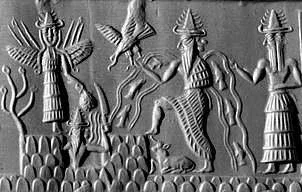
Related posts:
Views: 49
